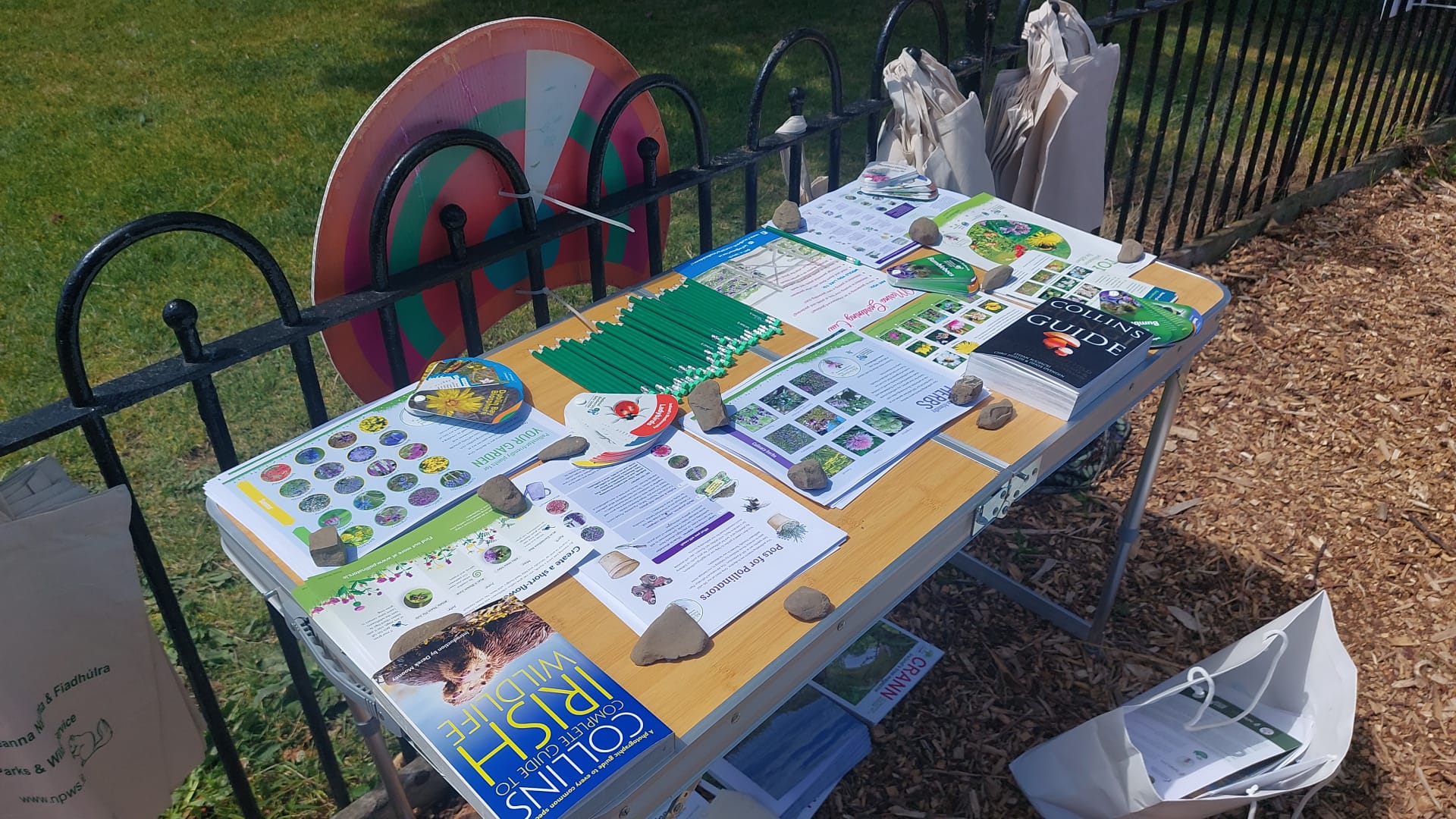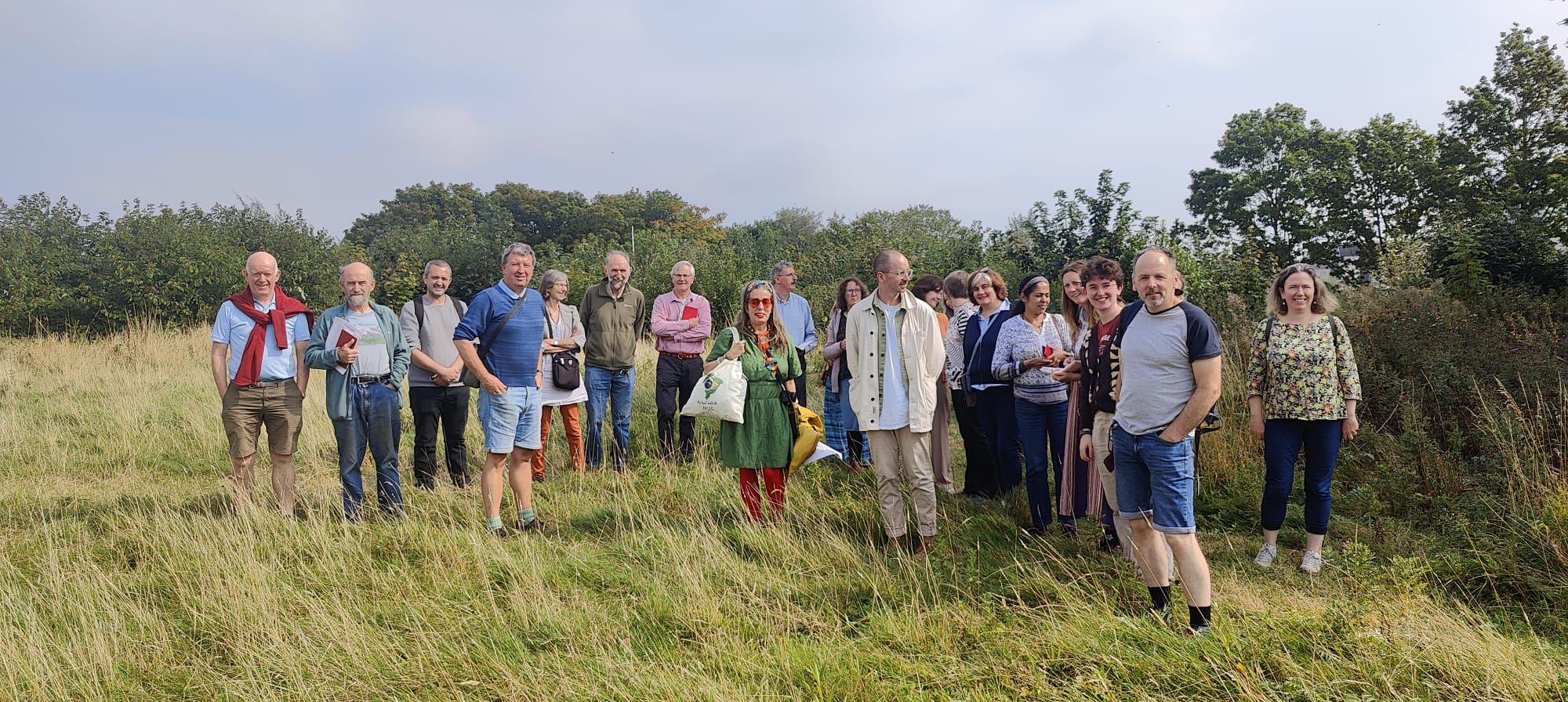Jumping into Community Action: My Laidlaw experience

Community action and volunteering has always been an activity which filled me with joy and a sense of purpose. As a teenager I was always involved in environmental activism, and it wasn't until I began developing an interest in ecology thatI realised the biodiversity crisis was equally urgent and intertwined with the climate crisis I had long focused on. As I walked through my local area, looking at sprawling monocultures of grass, I always dreamt of creating a haven for both biodiversity and a sustainabile community. Over time, I encountered the vast landscape of inspiring community groups around Dublin working to bring nature into our city and make it a better place. However, what I noticed through speaking to these groups was that they had all formed organically and independently, without any guidelines, instructions, or support. They had to navigate the challenges of interacting with local authorities, finding reliable information to work from, access funding, and building a strong relationship with their local community all on their own.
From these conversations, I got a sense that these challenges were creating massive barriers and preventing community groups from reaching their full potential. I knew I needed to learn more, and so I was inspired to research these barriers through interviews for my Laidlaw research project this summer. This experience has been a journey of learning how to be a strong advocate, and supporting community groups working on these important causes. I dove in, not only through research, but learning alongside these community groups, and joining in at the centre of the action.

1) The first event I participated in was right at home in my local area. Our local residents association received funding to plan a big community festival to celebrate 100 years since Marino was built. At this festival, I was lucky to be involved in the community garden stand with the Marino Gardening group. We spent the day educating locals about biodiversity and the pollinator-friendly herb garden that had just been planted. I also took this opportunity to promote the new Eco Marino biodiversity group I founded, and successfully got lots of eager sign-ups! It was so rewarding knowing that my decision to take action by forming the Eco Marino group has allowed nature-lovers in my local area to come together and work to create a biodiverse community.
2) As part of my research, I had the pleasure of travelling to Phibsboro to meet the members of the tidy towns biodiversity group. I was welcomed into the Villa Bank Garden, which I learnt was a reclaimed derelict litter-filled site at the edge of Mountjoy prison car park, now transformed into a buzzing wildlife garden.
3) I also had the pleasure of meeting members of Bloomin' Crumlin, and learnt many fascinating details of how they created a community-wide network to transform their local area. From tackling dumping, creating a communityvegetable garden, and mapping the health of local trees, this group had such an inspiring array of projects and a wonderful impact in their community.

4) Alongside some members of the Marino community garden, I attended a Biodiversity & Climate Action workshop sponsored by Dublin City council. Sustainable horticulturalist, Aoife Munn, taught all of us community groups and interested individuals from around Dublin how to plan and create a holistic sustainable and nature-friendly community. I am so grateful to have spoken to an expert like Aoife, and to have met people from every corner of Dublin who want to create change. As Aoife Munn told as "If you're not goingto do it, who else will?”
5) Throughout the summer, I also worked on officially launching Eco Marino and forming our local committee! It has been fantastic to work on my leadership skills in this applied way, and to put my energy towards a cause that I have been
passionate about for so long. Engaging in leadership is now an avenue to make my hopes for the future come true, and I feel I am finally learning the dedication and effort it takes to be the change you want to see in the world.

6) With the newly formed Dublin Urban Biodiversity (DUB) network, community-focused people around the city are coming together to change the face of urban biodiversity in Dublin. I will be continuing my learning journey with them, working as a team to take collective action and creating changes alongside local authorities. Over the next year, I will be continuing my research by collecting the concerns and solutions desired by members of the network. I will be using my new thematic analysis skills to collect them into themes, and summarise them to be presented to local authorities.
This summer has been filled with so many inspiring experiences, and I am so glad to have taken a leap into the centre of the reality of what I have been researching this summer. My Laidlaw summer 1 experience has been a time rich with growth, learning, overcoming challenges, and reaching new goals, but most importantly, a time surrounded by the power of community action!
Finn Kelly McHugh, 2024/2025 Cohort, Botany at Trinity College Dublin.
Please sign in
If you are a registered user on Laidlaw Scholars Network, please sign in